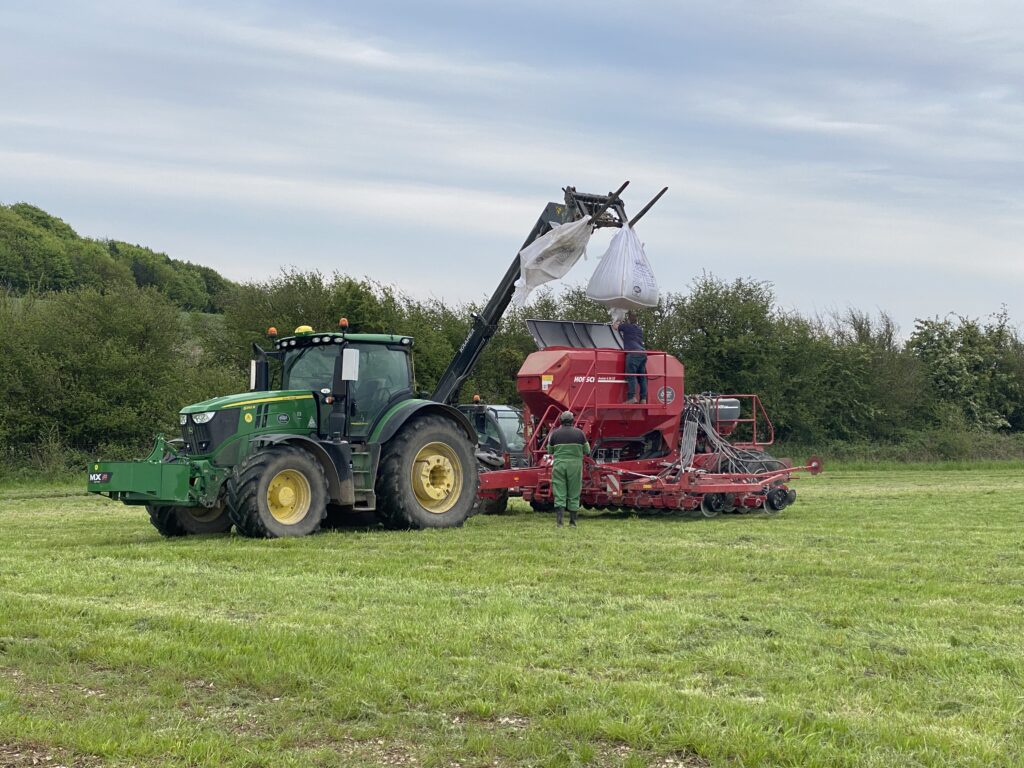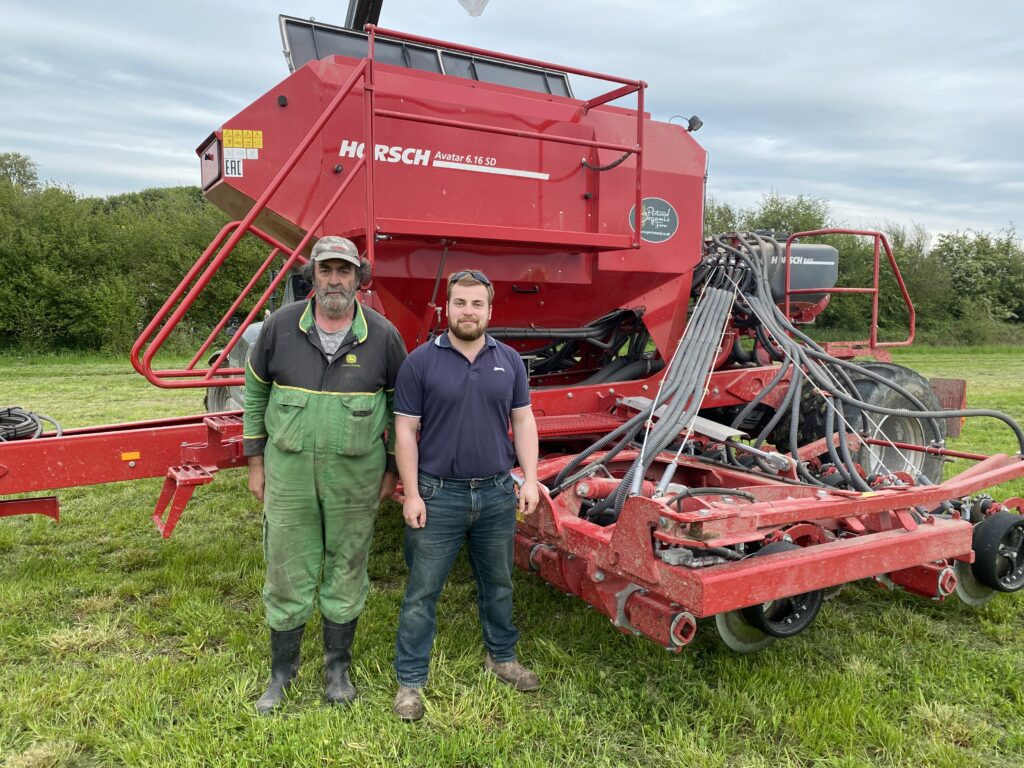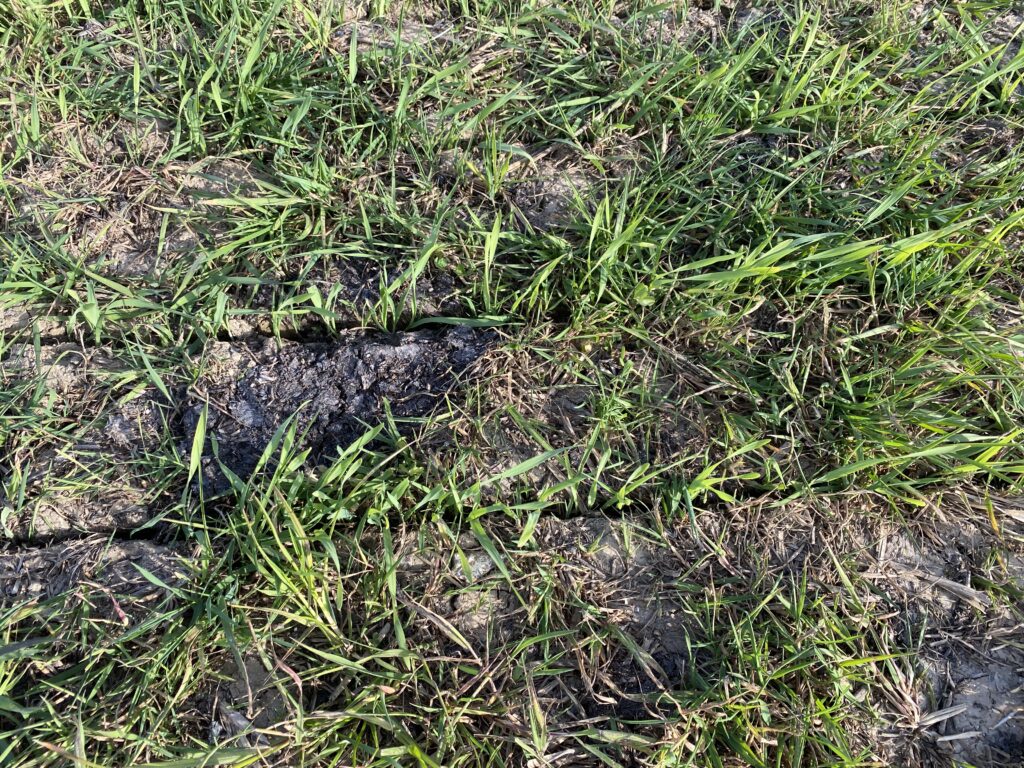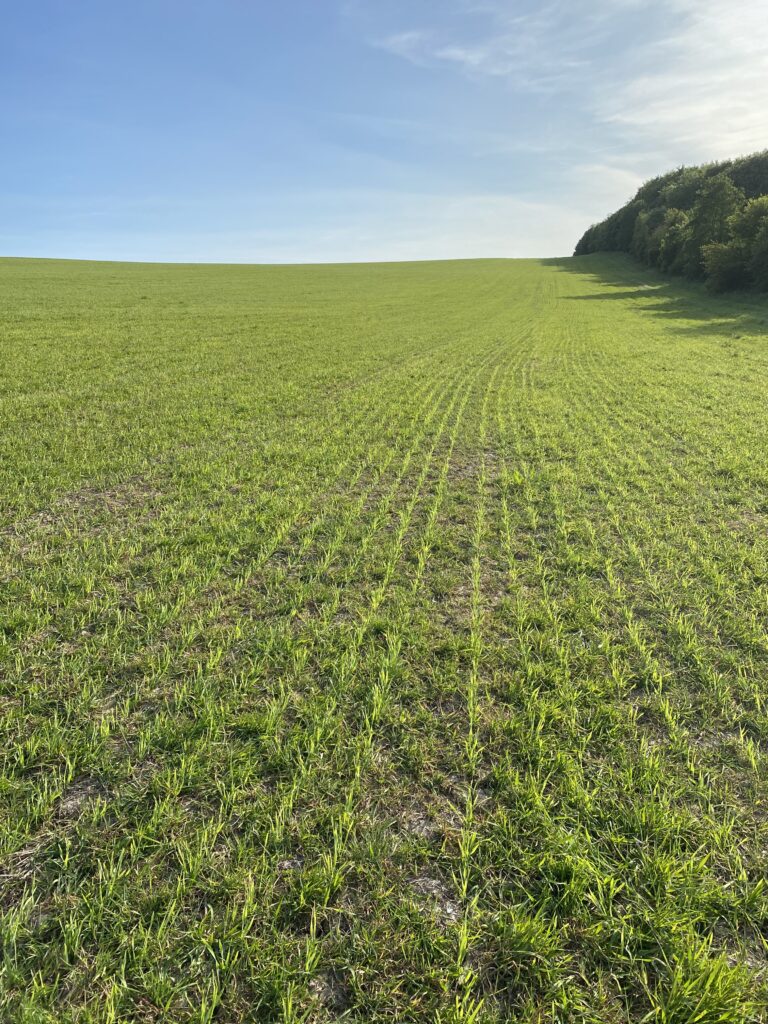By Wilfred Mole, Lower Pertwood Farm, Wiltshire.
The debate continues between arable farmers worldwide who feel that they should remain conventional, in the traditional sense, and a growing number of farmers who are convinced that Regenerative (“Regen”) is the way forward. The small Organic arable sector is also questioning their role, due to the fact that “Regenerative” in principle has the same objectives, i.e., to be much kinder to one’s Soil and to farm with Nature where possible.
The sound principles of Regen farming resonate very strongly with most farmers for two reasons:
1) They realise that something needs to be done urgently to mitigate the negative implications of climate change as they are directly affected.
2) They also realise that the farming practices of the past utilized overzealous ground engagement practices which can now be reversed.
A change in the climate itself has created different farming conditions. While ice melts at the poles and deserts spread nearest the equator, the UK has largely benefitted from prevailing weather conditions. One only has to travel around the English countryside to see how robust the pastures appear to be and how well everything is growing, particularly in undisturbed wilding areas where no one is actually interfering with the process.
As arable farmers, our unofficial guideline to Regenerative practices is as follows:
1) Don’t disturb the soil.
2) Keep the soil surface covered.
3) Keep living roots in the soil.
4) Grow a diverse range of crops.
5) Bring grazing animals back to the land.
Central to these priorities is soil. Everything we do on the land affects the soil and a farmer who has the best interests of his soils at heart will prioritize this issue and place it at the center of the farms’ ongoing arable strategy.
This is where the Organic / Regenerative conundrum emerges. Unfortunately, a fundamental and often unavoidable practice in organic arable farming is to plough. It has been that way for over 150 years with both animal drawn and manual soil disturbance being practiced for centuries. It continues to be the primary method used by Organic arable farmers to control weeds. In so doing, it flies directly in the face of one of the most important aspects of the Regenerative farming model. Any farmer wanting to improve soil health would not want to plough, and added to this the dramatic increase in diesel prices and the wear and tear on the machinery has made ploughing a costly exercise.
Having an organic farm in the Southwest of England provides us with an opportunity to understand what it is like to produce organic crops against the background of the regulations that govern the organic sector. We also acquired a neighboring farm a few years ago that was conventional, and we decided to leave it that way because it provided us with an opportunity to experiment outside of the Organic regulations. In short, it is our Regenerative farming laboratory.
Having been Organic since 1987 we are in a unique position to understand how Organic works because we have followed the rules for decades. Much of what we do in the organic arable sense is already regenerative. The absence of any form of artificial fertiliser, pesticides, weed killers, glyphosate etc. is the bedrock of the organic system and has resulted in an array of ecological improvements and has allowed the farm to recover its vitality over the years. We have not had many practical solutions to the challenges we face in an Organic arable environment.
However, by taking a leaf out of the regenerative book, we are beginning to find ways of adapting to the challenges that exist, some of which often happen incidentally. The heavy rains of the last few months meant that our arable programme was delayed. One particular 120 acre ley was still untouched at the end of April. It has been in grass and clover for a number of years and was in a very good state to be converted back into a fertile arable field. However, for that to happen, in theory it had to be ploughed.
We estimated it would take 5 days to plough it, but conditions were too wet to drill an arable crop before the end of May. Our team, supported by our agronomist, responded proactively to the challenge and came up with an innovative idea. They suggested we top it, leaving the organic material on the surface. Then, using our Horsch Avatar planter, we were able in one non-stop session to direct drill Organic own grown barley in 16cm rows directly into the topped grass/clover ley.

Wet Field North after topping.


Gerwyn Hughes (left) and Dan Davies ready to drill.


Warm weather encouraged germination and now after 2 weeks the race is on.
Some disturbance of the soil remains appropriate in some circumstances unfortunately if crops are to be grown. If ploughing is necessary then it should be shallow (5 inches or less). There are many advantages to be gained from minimising tillage and keeping “trash” on the surface, all the while encouraging soil flora to develop their capacity to incorporate organic matter as much as possible.
Glyphosate which is a potential tool of Regen is a useful and beguiling tool but it is also a carcinogen, and counterproductive because it kills the very bugs that one is trying to encourage. Likewise, soluble fertilisers. In addition a core issue with regards to sustainability is the carbon/nitrogen balance. If one wishes to increase carbon in the soil, then this tends to lock up the nitrogen.
A Regenerative Farmer up to now is not governed by any regulatory body nor priced at a set premium. Regen is a concept encompassed by a word and there are no rules, no precise definition, no legal framework, no regulatory structure, no clear point of difference and no established market.
Thus, the practices that are being adopted are left entirely at the farmer’s discretion. They have their conscience and the best interests of their soil to motivate them going forward. The Organic Farmer on the other hand, if ploughing can be avoided as per the example above, may achieve an excellent income per Ha due to low input costs with reasonable yields and an a significant price premium.
The Organic sector receives a premium on organic products because they are correctly perceived by the marketplace to have been produced in a healthier way than similar products from conventional farms. However, there is growing awareness of the benefits of Regenerative farming to our soils and potentially to consumers. This is beginning to be recognised by industry, as demonstrated by the example of Carlsberg Breweries who are now insisting that Malting Barley for their major breweries across Europe are grown within a Regenerative system. A comment by one of the farmers interviewed said “Carlsberg are actively rewarding those farmers who use these techniques.” We may be seeing the dawn of a new premium to reward Regenerative farmers in much the same way as Organic farmers are being rewarded.
Overall, we believe that Regen is at the moment a mid way station, a halfway house on the path to “regenerative organic” promoted as the holy grail by respected organizations like The Rodale Institute in the US. Regen as it stands is still immature and undeveloped as a food production system. The principles of Regen and Organic are certainly aligned. However we cannot see Regen replicating the Organic model by introducing all the bureaucracy and auditing that Organic farmers are subjected to.
Realistically, a farmer can be Regenerative without converting fully to organic, and that makes it easier to get going. In our case, if our experiment succeeds, we have removed a major cost factor in terms of land preparation by not having to plough, and it also relieves us of a moral burden because we are convinced that disturbing the soil by ploughing is an unacceptable practice.
What is obvious is the fact that more and more farmers are recognising that if they think outside the box, and if they have confidence that it might have a good outcome, then they must take risks and go for it. We could also ask the question as to why mainstream agriculture of our and our parents’ generation did not do more to move in a Regenerative direction earlier. The fact is that the technology did not exist for them to do what we can do today and they simply farmed with the tools and knowledge they had. In the modern world, one can now do things differently, but it requires a bold approach by the Regen-minded farmer who is in many cases still operating in uncharted territory.



